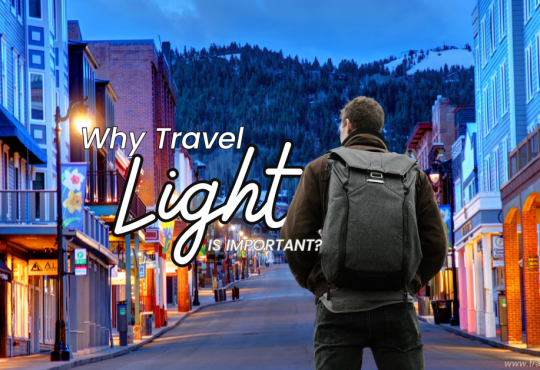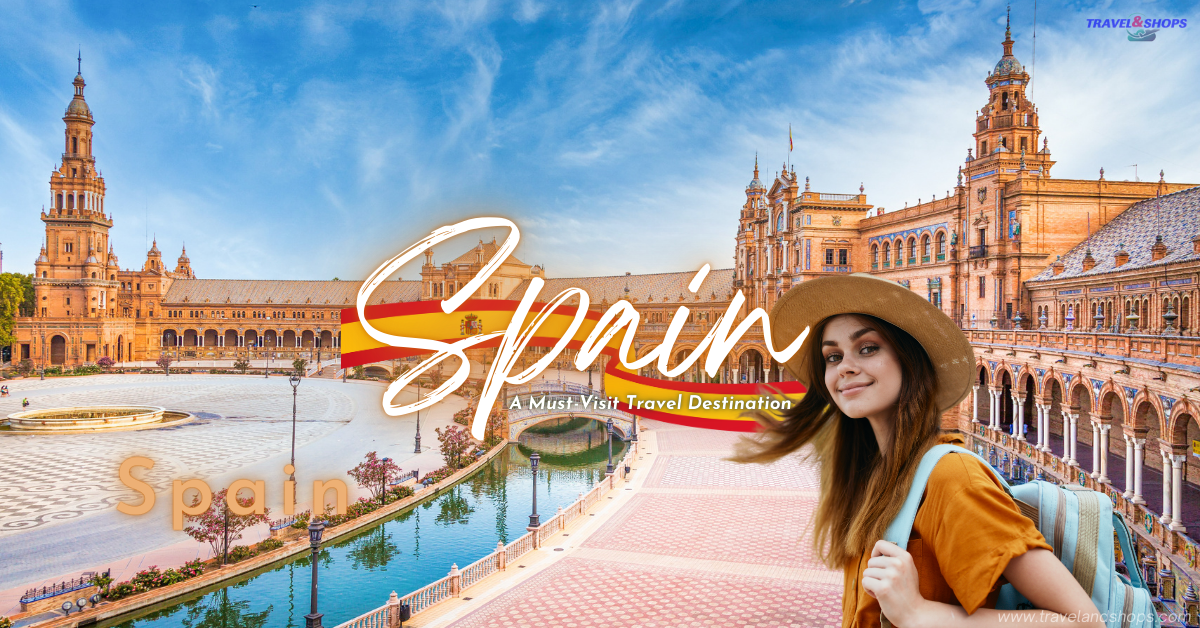
Spain is a country of contrasts and captivating experiences. From the sunny shores of the Mediterranean to the charming, historic towns of the north, and the vibrant cities in between, Spain offers an endless array of travel experiences. If you’re dreaming of Spain, it can be hard to narrow down your list of must-visit destinations. The good news is that each area has its own unique highlights, and with some planning, you can see the best of Spain without feeling rushed. But how much time should you dedicate to each place to get the most out of your visit?
In this guide, we’ll introduce you to some of the best travel destinations in Spain and offer insights into how long to stay in each place. Whether you’re interested in the art and nightlife of Barcelona, the Moorish architecture of Granada, or the tranquil beaches of the Costa del Sol, you’ll find helpful tips here to plan a well-rounded Spanish adventure.
7 Best Travel Destinations in Spain
1. Barcelona: The City of Art, Architecture, and Beaches
Recommended Stay: 3-4 Days
Barcelona is a dazzling blend of historical sites, modern art, buzzing nightlife, and Mediterranean beaches, making it a must-see destination for travelers seeking variety in their itinerary. The city is famous for its iconic architect Antoni Gaudí, whose distinctive creations shape the city’s skyline and set Barcelona apart as an architectural marvel. While the city is home to some of the most popular beaches in Europe, Barcelona also offers charming neighborhoods and a rich cultural scene, making it a well-rounded destination for a range of interests.
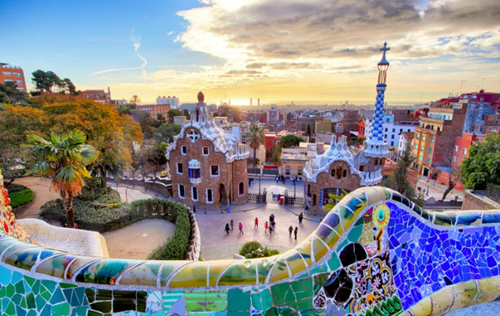
Top Highlights in Barcelona:
- Sagrada Família: This is not just a church—it’s a marvel of modernist design that has been under construction for over a century. Gaudí’s masterpiece combines Gothic and Art Nouveau forms, with intricate facades, towering spires, and colorful stained glass that creates a breathtaking play of light inside. Every corner tells a story, and the ongoing construction, scheduled to be completed in 2026, only adds to the intrigue of this UNESCO World Heritage site.
- Park Güell: Originally planned as a housing development, Park Güell became an open-air museum showcasing Gaudí’s creativity. The park’s colorful mosaic benches, organic shapes, and playful architecture make it a fun place to explore and one of the best viewpoints in Barcelona, with panoramic views stretching over the city and the Mediterranean Sea.
- Gothic Quarter (Barri Gòtic): This historic neighborhood takes you back in time with its narrow, winding streets, medieval buildings, and hidden courtyards. The Gothic Quarter is also home to some of Barcelona’s oldest and most charming landmarks, such as the Barcelona Cathedral and the ancient Roman walls. This area is packed with unique shops, cafes, and street performances, making it an ideal spot to wander and soak in the city’s history.
- La Boqueria Market: This bustling market is a feast for the senses and an excellent introduction to Spanish cuisine. From fresh seafood and meats to colorful fruits and local treats, La Boqueria has something for everyone. It’s also a fantastic spot to try authentic tapas, sample regional delicacies, or grab a quick snack while exploring the nearby streets of La Rambla.
- Casa Batlló and Casa Milà (La Pedrera): These two iconic buildings showcase Gaudí’s signature style, blending organic shapes, vibrant colors, and creative use of natural light. Casa Batlló is especially known for its “dragon-scale” roof and whimsical facade, while Casa Milà, or La Pedrera, features undulating stone walls and a rooftop terrace with fantastical chimney sculptures. Both buildings offer tours, and their interiors are as fascinating as their exteriors.
- Montjuïc Hill: For a mix of culture and outdoor activity, head to Montjuïc Hill. Accessible by cable car, the hill is home to Montjuïc Castle, the Magic Fountain, and the Olympic Stadium. It’s a beautiful spot to take in city views, enjoy the surrounding gardens, and even visit the Museu Nacional d’Art de Catalunya (MNAC), which houses an extensive collection of Catalan art.
- Barcelona Beaches: Barcelona’s coastline is easily accessible and perfect for a relaxing day by the sea. The most popular beaches, like Barceloneta and Bogatell, are lively spots with restaurants, bars, and facilities for water sports. The beaches are bustling during the summer, offering a chance to unwind after a day of sightseeing and even join the locals for some beachside tapas.
- El Born District: Known for its hip vibe, trendy boutiques, and tapas bars, El Born is a neighborhood that’s full of surprises. You’ll find historical sites like the Santa Maria del Mar Basilica alongside art galleries and the fascinating Picasso Museum, which houses a collection of works from Pablo Picasso’s formative years. The lively nightlife and quirky cafes in El Born make it a great area for an evening stroll or late-night dining.
How to Plan Your Days in Barcelona:
With three to four days in Barcelona, you can comfortably explore the city’s most famous attractions while still having time to immerse yourself in the local culture. Here’s a suggested itinerary to get the most out of your stay:
- Day 1: Start with a visit to the Sagrada Família in the morning, then head to the Gothic Quarter to explore its historic sites and grab lunch. In the afternoon, walk along La Rambla and browse La Boqueria Market. End your day with a relaxed evening stroll along the beach.
- Day 2: Spend the morning at Park Güell to enjoy its views and colorful architecture. From there, head to Casa Batlló and Casa Milà to see more of Gaudí’s masterpieces. In the evening, explore the El Born district and try local Catalan dishes at a tapas bar.
- Day 3: Take a trip up Montjuïc Hill, where you can visit Montjuïc Castle and enjoy panoramic city views. In the afternoon, head to Barceloneta Beach to unwind and perhaps indulge in some water sports. Cap off your day with a visit to the Magic Fountain to watch its light and music show.
- Optional Day 4: If you have an extra day, take a day trip to Montserrat, a mountain range with a famous monastery located about an hour from Barcelona. Alternatively, spend more time exploring lesser-known neighborhoods like Gràcia, known for its bohemian atmosphere, local boutiques, and lively squares.
2. Madrid: Spain’s Heart and Cultural Hub
Recommended Stay: 3-4 Days
Madrid, Spain’s vibrant capital, is a city brimming with art, history, and life. As the country’s cultural heart, it offers a unique mix of grand architecture, world-class museums, bustling plazas, and an unmistakably lively atmosphere. Known for its historical landmarks, fantastic cuisine, and the contagious energy of its locals, Madrid provides travelers with a well-rounded experience of Spanish life. This city seamlessly combines the elegance of old-world Spain with the innovation and vibrancy of a modern metropolis.
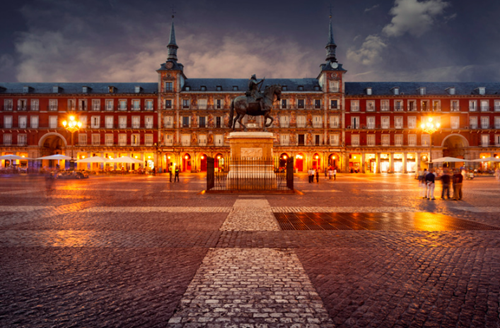
Top Highlights in Madrid:
- The Prado Museum: As one of the most renowned art museums in the world, the Prado is home to a stunning collection of European masterpieces. You’ll find works by legendary Spanish artists like Velázquez, Goya, and El Greco, as well as international classics by Titian, Rubens, and Bosch. The museum itself is an architectural gem, and with its vast collection, you could easily spend several hours here.
- Royal Palace of Madrid: The Royal Palace, Europe’s largest functioning royal residence, is a sight to behold. The grand architecture, lavish interiors, and detailed frescoes offer a glimpse into the opulence of Spanish royalty. Although the Spanish monarchy no longer lives here, it’s still used for official events. Don’t miss the Throne Room, the Hall of Mirrors, and the Royal Armory, which holds one of the finest collections of medieval weaponry in the world.
- Plaza Mayor: This iconic square in the heart of Madrid has been the city’s main gathering spot for centuries. Surrounded by historic buildings with vibrant facades, Plaza Mayor is ideal for people-watching, enjoying a coffee at a terrace café, or sampling local foods like “bocadillo de calamares” (fried squid sandwich) at nearby eateries. Its arcaded walkways are also lined with small shops and cafes, offering a great spot to relax and take in the atmosphere.
- El Retiro Park: Madrid’s green oasis, El Retiro Park, is perfect for a leisurely stroll or a boat ride on the lake. Once a retreat for the Spanish monarchy, this vast park offers landscaped gardens, monuments, and fountains, such as the stunning Crystal Palace. Locals often come here to exercise, have picnics, or simply unwind, making it a fantastic place to experience Madrid’s everyday life.
- Gran Vía: Often called Madrid’s “Broadway,” Gran Vía is a bustling avenue filled with shops, theaters, restaurants, and iconic architecture. It’s the place to go for shopping, seeing a show, or simply marveling at the early 20th-century buildings. For the best views, head to one of Gran Vía’s rooftop terraces, where you can enjoy a panoramic look at the city’s skyline, especially beautiful at sunset.
- Thyssen-Bornemisza Museum: Alongside the Prado, the Thyssen-Bornemisza is part of Madrid’s “Golden Triangle of Art.” This museum offers an impressive collection that covers nearly every period of Western art history, from the Renaissance to Pop Art, featuring works by Van Gogh, Picasso, Monet, and Dali. It’s a great complement to the Prado and Reina Sofia museums, providing a comprehensive art experience in Madrid.
- Reina Sofía Museum: If you’re a fan of modern and contemporary art, Reina Sofía is a must-visit. The museum houses some of the most important 20th-century Spanish works, including Picasso’s powerful anti-war painting Guernica. You’ll also find pieces by Salvador Dalí and Joan Miró, offering a deep dive into Spain’s modern art legacy.
- Puerta del Sol: Puerta del Sol is one of Madrid’s most famous and busiest squares, known for its symbolic statues, such as the Oso y Madroño (the Bear and the Strawberry Tree), and as the location of the Kilometer Zero marker, from which all road distances in Spain are measured. It’s a lively area with shops, cafes, and street performers, and during New Year’s Eve, it becomes the center of Spain’s celebrations.
- La Latina Neighborhood: For an authentic taste of Madrid’s nightlife and tapas culture, head to La Latina. This neighborhood is known for its charming narrow streets, lively tapas bars, and traditional taverns. Calle de la Cava Baja is particularly popular for its range of tapas bars where you can sample Spanish classics like jamón ibérico, patatas bravas, and tortilla española (Spanish omelet). On Sundays, don’t miss the Rastro flea market, where you can shop for unique souvenirs and vintage items.
How to Plan Your Days in Madrid:
With three to four days in Madrid, you’ll be able to enjoy its highlights and delve into the city’s vibrant cultural scene. Here’s a suggested itinerary to make the most of your time:
- Day 1: Start with the Prado Museum to take in its world-class art collection, then head to Retiro Park for a leisurely walk or a rowboat ride. In the evening, explore the bustling atmosphere of Gran Vía and enjoy dinner at a local tapas bar.
- Day 2: Visit the Royal Palace in the morning, followed by Plaza Mayor, where you can have lunch or a coffee. In the afternoon, wander around the Puerta del Sol area and explore the shopping streets. End your day with a rooftop sunset view over Madrid.
- Day 3: Begin with a visit to the Reina Sofía Museum to see Guernica, followed by a stroll around the La Latina neighborhood. Sample tapas along Calle de la Cava Baja, and if it’s a Sunday, check out the Rastro flea market. Cap off your evening with a lively flamenco show to experience traditional Spanish music and dance.
- Optional Day 4: Spend this day exploring the Thyssen-Bornemisza Museum, then take a day trip to nearby destinations such as Toledo or Segovia, both easily accessible by train and filled with rich history and stunning architecture.
3. Seville: Flamenco, Fiestas, and Historic Charm
Recommended Stay: 2-3 Days
Seville, the capital of Spain’s Andalusia region, is a city steeped in vibrant culture, history, and a passion for life. Known for its grand celebrations, traditional flamenco performances, and architectural beauty, Seville is a must-visit destination for anyone looking to experience the essence of Spanish culture. Its streets are filled with the aromas of orange blossoms and the sounds of flamenco guitars, creating an atmosphere that’s both lively and enchanting.
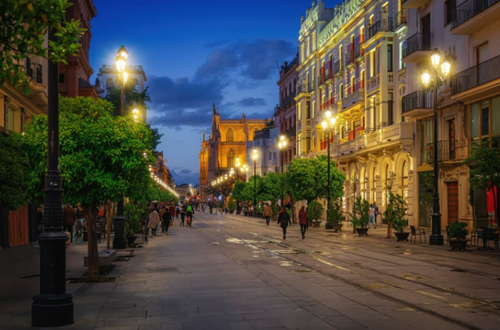
Top Highlights in Seville:
- Seville Cathedral and La Giralda: Seville’s Cathedral, officially known as the Cathedral of Saint Mary of the See, is the largest Gothic cathedral in the world and a UNESCO World Heritage site. Built on the site of a former mosque, it’s an architectural marvel that combines Gothic, Renaissance, and Baroque styles. Inside, you’ll find the tomb of Christopher Columbus and a stunning altarpiece that took over 80 years to complete. Don’t miss the Giralda Tower, a former minaret turned bell tower, which offers breathtaking views of the city from the top.
- Real Alcázar of Seville: This magnificent palace complex, also a UNESCO site, is a blend of Islamic and Christian architecture known as Mudéjar. Originally a Moorish fort, the Alcázar has been expanded over centuries, creating a maze of ornate rooms, intricate tile work, and lush gardens. Fans of Game of Thrones might recognize it as a filming location for the kingdom of Dorne. The gardens, with their fountains, pavilions, and peacocks, offer a peaceful retreat where you can wander and relax for hours.
- Barrio Santa Cruz: This historic neighborhood is a picturesque maze of narrow cobblestone streets, whitewashed houses, and vibrant plazas. Once the Jewish quarter of Seville, Barrio Santa Cruz is now one of the city’s most charming areas, filled with tapas bars, cafes, and boutiques. It’s a fantastic place to wander on foot, soaking in the sights and stopping for traditional tapas. The Plaza de Doña Elvira, with its orange trees and benches, is a beautiful spot to pause and enjoy the surroundings.
- Plaza de España: Built for the Ibero-American Exposition in 1929, Plaza de España is an architectural masterpiece with a grand semi-circular building, canals, and elaborate tile work representing each province in Spain. You can rent a rowboat to paddle along the canal or simply stroll around to admire the impressive architecture. The plaza is especially stunning at sunset when the warm light enhances its colors and makes for fantastic photos.
- Triana District: Located across the Guadalquivir River, Triana is the birthplace of flamenco and traditional Spanish ceramics. This lively district is known for its unique culture, bustling tapas bars, and ceramic workshops. It’s the perfect place to catch a live flamenco performance in a more intimate setting, away from the tourist crowds. Triana Market is also worth a visit, offering local produce, fresh seafood, and delicious Andalusian specialties.
- Metropol Parasol (Las Setas): A strikingly modern addition to Seville’s historic center, the Metropol Parasol (also known as Las Setas or “The Mushrooms”) is a wooden structure that resembles giant mushrooms. Designed by architect Jürgen Mayer, it’s one of the largest wooden structures in the world. Visitors can go to the top for panoramic views of Seville and enjoy a rooftop walkway that provides an entirely different perspective of the city.
- Flamenco Shows: Seville is the heart and soul of flamenco, and no trip to the city would be complete without experiencing this passionate dance form. The city has numerous flamenco venues, known as tablaos, where you can witness performances that capture the raw emotion of this traditional art. Venues like Casa de la Memoria and El Palacio Andaluz offer shows in intimate settings, allowing you to feel the intensity of the dance and music up close.
How to Plan Your Days in Seville:
With two to three days in Seville, you can immerse yourself in the city’s rich history, unique architecture, and cultural experiences. Here’s a suggested itinerary to help you make the most of your time:
- Day 1: Start your day with a visit to the Seville Cathedral and climb La Giralda for a panoramic view of the city. Afterward, head to the Real Alcázar to explore the palace rooms and lush gardens. In the evening, wander through Barrio Santa Cruz and stop at a local tapas bar for dinner.
- Day 2: Begin at Plaza de España to admire its unique architecture and intricate tile work, then head to the Triana District for a taste of authentic flamenco and a visit to the market. Take a walk along the Guadalquivir River, and in the evening, catch a live flamenco show at a traditional tablao.
- Optional Day 3: If you have an extra day, explore Las Setas for a different perspective of the city. Spend more time discovering the hidden corners of Barrio Santa Cruz or take a short day trip to nearby towns like Carmona or Itálica for additional history and scenery.
4. Granada: A Window into Moorish Spain
Recommended Stay: 2-3 Days
Granada, located at the foothills of the Sierra Nevada mountains, offers an immersive experience into Spain’s Moorish past. Known for its enchanting Alhambra Palace and the fusion of Islamic and Spanish culture, Granada is a place where history and beauty blend seamlessly. Wandering through its narrow streets, surrounded by the scents of jasmine and the sounds of flamenco guitar, travelers are transported to a different era. Granada’s unique heritage, vibrant neighborhoods, and breathtaking landscapes make it a must-visit destination for anyone seeking to discover Spain’s rich cultural tapestry.
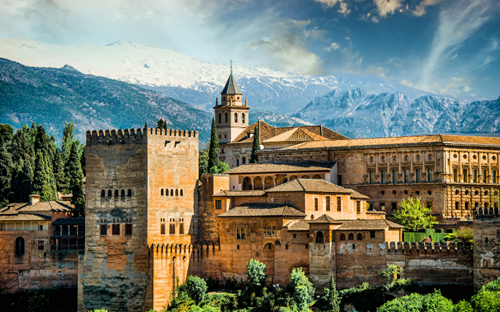
Top Highlights in Granada:
- The Alhambra: Granada’s crown jewel, the Alhambra, is a sprawling palace and fortress complex that dates back to the Nasrid dynasty, the last Islamic rulers of Spain. A UNESCO World Heritage site, the Alhambra is renowned for its intricate Islamic architecture, lush gardens, and panoramic views of Granada. Inside, you’ll find a stunning array of palaces, including the Nasrid Palaces, where detailed tilework, stucco decorations, and beautiful courtyards transport visitors to the height of Moorish art. Don’t miss the Court of the Lions, with its iconic marble fountain, or the Generalife gardens, a summer palace filled with vibrant flowers, fountains, and peaceful walkways.
- The Albaicín: Just across from the Alhambra lies the Albaicín, Granada’s historic Moorish quarter. This neighborhood, with its maze-like layout of narrow cobblestone streets, whitewashed houses, and small plazas, is a testament to Granada’s Islamic past. Walking through the Albaicín feels like stepping back in time, with hidden courtyards, traditional teahouses (teterías), and shops selling handcrafted ceramics and textiles. Make your way up to the Mirador de San Nicolás for one of the best views of the Alhambra, especially stunning at sunset when the palace glows a warm amber.
- Sacromonte: Known as the gypsy (Gitano) district, Sacromonte is famous for its white cave houses built into the hillside. Traditionally home to Granada’s Romani population, this neighborhood is the birthplace of a unique style of flamenco called zambra, which evolved from traditional Moorish celebrations. Here, you can watch authentic flamenco shows in cave venues, adding an intimate and atmospheric touch to the experience. A visit to Sacromonte offers a glimpse into the rich cultural mix that defines Granada.
- Granada Cathedral and Royal Chapel: Located in the city center, Granada Cathedral is a masterpiece of Renaissance architecture with a grand, intricately designed interior. Next to the cathedral is the Royal Chapel, where the Catholic Monarchs Ferdinand and Isabella are buried. Their decision to be interred here speaks to Granada’s importance in Spanish history, as it was the last stronghold of Muslim rule in Spain before its conquest by the Catholic Monarchs in 1492. The chapel houses several impressive artifacts, including royal crowns, scepters, and portraits.
- Calle Elvira and the Alcaicería Market: For a taste of Granada’s bustling market culture, visit Calle Elvira, a lively street lined with shops and cafes that leads into the Alcaicería, Granada’s old silk market. Originally a Moorish bazaar, the Alcaicería is filled with shops selling crafts, souvenirs, and intricate mosaics reminiscent of the city’s Islamic past. It’s a great place to pick up unique mementos like ceramic tiles, leather goods, and brightly colored lanterns.
- Carrera del Darro: Known as one of Granada’s most beautiful streets, Carrera del Darro runs alongside the Darro River, offering picturesque views of ancient stone bridges, quaint houses, and the Alhambra towering above. The street is lined with historic buildings, some dating back to the 16th century, and small cafes where you can relax and take in the ambiance. Walking along Carrera del Darro is especially romantic in the evening when the lights reflect off the water, creating a magical atmosphere.
How to Plan Your Days in Granada:
With two to three days in Granada, you can fully appreciate the city’s unique blend of history, culture, and natural beauty. Here’s a suggested itinerary to make the most of your stay:
- Day 1: Start with a morning visit to the Alhambra to avoid the crowds and fully experience its intricate beauty. Spend a few hours exploring the Nasrid Palaces, the Alcazaba fortress, and the Generalife gardens. In the afternoon, wander through the Albaicín neighborhood, and catch the sunset at the Mirador de San Nicolás for a breathtaking view of the Alhambra.
- Day 2: Begin with a visit to Granada Cathedral and the Royal Chapel. Then head to Calle Elvira and the Alcaicería to explore Granada’s lively market area and pick up some unique souvenirs. In the evening, go to the Sacromonte neighborhood to enjoy a flamenco performance in a traditional cave setting and experience the city’s vibrant music and dance culture.
- Optional Day 3: Spend your third day exploring Carrera del Darro, stopping at cafes and taking in the scenic views. If you’re up for a bit of nature, consider a short hike into the foothills of the Sierra Nevada mountains, which provide a beautiful backdrop to Granada.
5. Valencia: Sun, Sea, and the City of Arts and Sciences
Recommended Stay: 2-3 Days
Valencia, Spain’s third-largest city, combines a rich history with a vibrant modernity, making it an ideal destination for travelers seeking sun, culture, and innovation. Known for its sandy beaches, world-famous paella, and the futuristic City of Arts and Sciences, Valencia offers an enticing blend of old-world charm and cutting-edge architecture. Whether you’re strolling through ancient neighborhoods, relaxing on the beach, or marveling at modern structures, Valencia has something for every traveler.
Top Highlights in Valencia:
- City of Arts and Sciences (Ciudad de las Artes y las Ciencias): Designed by the famed architect Santiago Calatrava, the City of Arts and Sciences is Valencia’s most iconic landmark and a masterpiece of contemporary architecture. This massive cultural and architectural complex includes various attractions:
- The Hemisfèric: Shaped like a giant eye, this IMAX cinema and planetarium offer 3D and 4D movies, as well as educational experiences that appeal to both kids and adults.
- The Science Museum (Museu de les Ciències Príncipe Felipe): A hands-on science museum with interactive exhibits covering physics, biology, and technology, making it perfect for families and science enthusiasts.
- Oceanogràfic: Europe’s largest aquarium, the Oceanogràfic houses over 500 marine species, including dolphins, sharks, and penguins. The underwater tunnels offer an immersive experience, and the dolphinarium is a popular highlight.
- Palau de les Arts Reina Sofia: Valencia’s opera house, known for its impressive design and fantastic acoustics, hosts operas, concerts, and ballet performances.
- Umbracle: A landscaped walkway with beautiful gardens and art installations, providing a relaxing space to stroll while admiring the futuristic surroundings.
- Valencia Cathedral and the Holy Grail: Located in the heart of the old town, Valencia Cathedral is a blend of Gothic, Baroque, and Romanesque styles, showcasing the city’s architectural evolution over centuries. It’s famous for housing what many believe to be the true Holy Grail, a revered artifact that draws visitors from around the world. You can climb the cathedral’s Miguelete Tower for panoramic views of the city, a great way to get a sense of Valencia’s historical center.
- Mercado Central (Central Market): One of the largest and oldest markets in Europe, Mercado Central is a food lover’s paradise. The market is housed in a beautiful Art Nouveau building with stained glass windows and ironwork details. Inside, you’ll find an impressive variety of fresh produce, meats, seafood, and local specialties. Don’t miss the chance to sample horchata, a traditional Valencian drink made from tiger nuts, or grab a bite of jamón ibérico (Iberian ham) from one of the vendors.
- La Lonja de la Seda (Silk Exchange): Another UNESCO World Heritage site, La Lonja is a stunning Gothic building that reflects Valencia’s rich history as a Mediterranean trading hub. Built in the 15th century, it once served as a center for silk trading, and its magnificent columns and vaulted ceilings make it a prime example of civil Gothic architecture. La Lonja’s peaceful inner courtyard, filled with orange trees, offers a serene escape from the bustling city.
- Turia Gardens (Jardín del Turia): Once the Turia River, this former riverbed was transformed into a 9-kilometer-long park that stretches through the heart of Valencia. The Turia Gardens are filled with playgrounds, walking paths, fountains, and even sports facilities, making it a favorite spot for both locals and tourists. Biking through Turia Gardens is a great way to explore Valencia’s green spaces, with views of both historic buildings and the modern City of Arts and Sciences.
- Malvarrosa Beach: Valencia’s most famous beach, Malvarrosa Beach, is just a short trip from the city center and offers a perfect spot to relax by the Mediterranean Sea. With golden sands, calm waters, and plenty of beachside restaurants, it’s ideal for a day of sunbathing, swimming, or trying local seafood dishes like fideuà, a paella-like dish made with noodles instead of rice. The beachfront promenade is lively and filled with cafes and bars where you can enjoy tapas and a refreshing drink after a day on the sand.
How to Plan Your Days in Valencia:
With two to three days in Valencia, you can enjoy the city’s major attractions, stunning beaches, and flavorful cuisine. Here’s a suggested itinerary:
- Day 1: Start with a visit to the City of Arts and Sciences. Spend the morning exploring the Science Museum and Oceanogràfic, and take a stroll through the Umbracle. In the afternoon, head to the Turia Gardens for a leisurely walk or bike ride and take in the mix of greenery and architecture.
- Day 2: Begin with a tour of Valencia Cathedral, where you can see the Holy Grail and enjoy views from Miguelete Tower. Next, explore Mercado Central and sample some local foods for lunch. In the afternoon, visit La Lonja de la Seda and wander the charming streets of Valencia’s old town.
- Optional Day 3: Spend the day at Malvarrosa Beach, relaxing by the sea or enjoying water sports. Head to a beachside restaurant to try Valencia’s world-famous paella. If you prefer a more cultural experience, visit the Palau de les Arts for a performance or exhibition in the evening.
6. Costa del Sol: Sun-Drenched Beaches and Relaxation
Recommended Stay: 3-5 Days
Costa del Sol, translating to “Coast of the Sun,” lives up to its name with an average of 300 sunny days a year. Located in the southern region of Andalusia, this coastal paradise stretches along the Mediterranean and is dotted with beautiful beaches, charming white-washed villages, luxury resorts, and lively towns. Famous for its laid-back vibe and year-round sunshine, Costa del Sol is ideal for travelers looking to unwind, soak up the sun, and enjoy vibrant nightlife or peaceful beach days. It’s a versatile destination, perfect for both families and solo travelers, offering everything from beach lounging to water sports and luxury amenities.
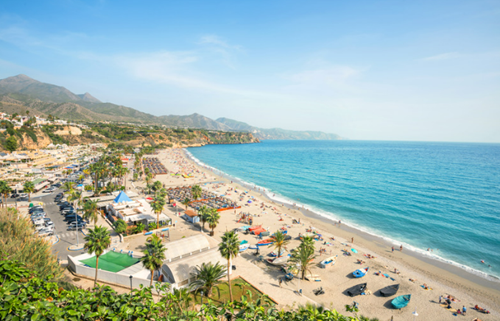
Top Highlights in Costa del Sol:
- Malaga: As the Costa del Sol’s largest city and gateway, Malaga is a vibrant coastal hub that combines historic sites with a modern edge. The birthplace of Picasso, Malaga is rich in cultural offerings, including the Picasso Museum and the Alcazaba, an 11th-century Moorish fortress with spectacular views over the city. Malaga’s beaches, such as Playa de la Malagueta, offer soft sands and clear waters, while the bustling port area has chic restaurants, cafes, and shopping. Malaga’s nightlife is also lively, with everything from trendy rooftop bars to traditional tapas spots.
- Marbella: Known for its glamorous appeal, Marbella is a favorite among celebrities and luxury travelers. This resort town offers beautiful sandy beaches, high-end shopping, and fine dining. Marbella’s Old Town, or “Casco Antiguo,” is filled with narrow cobblestone streets, quaint squares, and white-washed houses adorned with flowers, creating a picturesque setting. In the luxurious Puerto Banús marina, you’ll find designer shops, yachts, and upscale bars, making it an ideal spot for those seeking a touch of opulence and style.
- Nerja: Nerja is known for its beautiful beaches and spectacular cliffs, but it’s the famous “Balcon de Europa” viewpoint that offers some of the best panoramic views on the Costa del Sol. From here, you can see crystal-clear waters stretching to the horizon, along with rocky coves and nearby beaches. Nerja’s beaches, like Burriana Beach, are popular for water sports like paddleboarding and snorkeling. Nearby, the Caves of Nerja feature impressive stalactites and stalagmites, and even host concerts in a unique underground auditorium.
- Benalmádena: Benalmádena is a lively beach town known for its family-friendly attractions and vibrant nightlife. The town’s Puerto Marina is often considered one of the most beautiful marinas in the world, with its Mediterranean-style architecture, restaurants, and boutiques. Benalmádena also has several attractions for families, including Tivoli World amusement park and the Sea Life Aquarium. The town is famous for its cable car ride that takes you to the top of Mount Calamorro, where you can enjoy panoramic views and hiking trails.
- Estepona: For a more traditional Andalusian experience, Estepona is a charming coastal town with a slower pace and less touristy feel. Its old town is one of the most well-preserved in the region, with narrow streets, colorful flowers, and small shops. Estepona’s beaches are clean, calm, and family-friendly, making it a great destination for those looking for a peaceful escape. The town is also known for its street murals and small museums, adding a touch of culture and art to the coastal experience.
How to Plan Your Days in Costa del Sol:
Costa del Sol’s variety makes it possible to plan a customized trip based on your interests. Here’s a suggested itinerary for a relaxing yet fulfilling stay:
- Day 1: Start in Malaga with a visit to the Picasso Museum and the historic Alcazaba. Spend the afternoon at Playa de la Malagueta, relaxing on the beach or enjoying a leisurely lunch at a beachfront restaurant. In the evening, explore the lively port area or find a rooftop bar for sunset views.
- Day 2: Head to Marbella for a taste of luxury. Wander through Marbella’s Old Town in the morning, and then spend the afternoon at one of the city’s beautiful beaches or Puerto Banús marina for upscale shopping and dining.
- Day 3: Spend a day in Nerja, visiting the “Balcon de Europa” for breathtaking views, and relax on Burriana Beach. If time permits, explore the Caves of Nerja to see the fascinating rock formations and enjoy a unique setting that feels almost like stepping into another world.
- Optional Days 4-5: Explore Benalmádena, where you can visit Puerto Marina, take the cable car for stunning views, or explore family-friendly attractions. Spend a day in Estepona if you’re seeking a quieter, more traditional Andalusian town with beautiful beaches and picturesque streets.
7. Ibiza and the Balearic Islands: A Mix of Beach and Nightlife
Recommended Stay: 3-5 Days
The Balearic Islands—Ibiza, Mallorca, Menorca, and Formentera—are some of Spain’s most iconic travel destinations, each offering its own mix of sun-soaked beaches, historical sites, and vibrant nightlife. Known for its party atmosphere, Ibiza attracts visitors from all over the world with its legendary beach clubs and DJs. However, the island also has serene spots where visitors can unwind in peaceful coves. Mallorca boasts scenic landscapes and charming villages; Menorca is known for its laid-back vibe and turquoise waters; and Formentera provides a truly untouched beach experience. Here, you can hop between islands or focus on one for a well-rounded Balearic adventure.
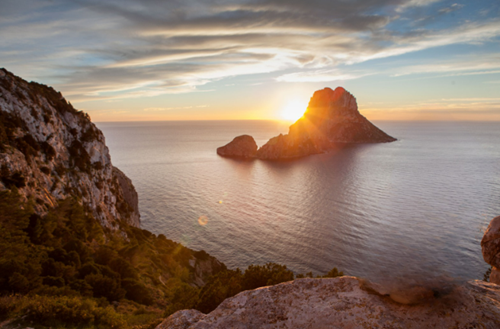
Top Highlights in the Balearic Islands:
- Ibiza Old Town (Dalt Vila): Designated as a UNESCO World Heritage site, Ibiza’s Old Town is a historic gem filled with winding cobblestone streets, ancient walls, and scenic viewpoints. The area is alive with a mix of artisan shops, galleries, and outdoor cafes, making it ideal for an afternoon stroll. At night, the Old Town transforms into a vibrant scene with live music and bars, where visitors can experience Ibiza’s unique cultural and social atmosphere.
- Cala Comte Beach, Ibiza: This popular beach is celebrated for its crystal-clear, turquoise waters and incredible sunset views, making it one of Ibiza’s must-visit spots. With a mix of beachside bars and a more secluded, natural feel, Cala Comte is perfect for both relaxation and a bit of lively socializing. For a memorable evening, grab a drink at the popular Sunset Ashram bar, where you can watch the sun dip below the horizon with music playing in the background.
- Mallorca’s Serra de Tramuntana: Stretching along the northern coast of Mallorca, the Serra de Tramuntana is a UNESCO-listed mountain range that offers hiking trails, scenic drives, and breathtaking vistas. Towns like Sóller and Valldemossa, nestled within the mountains, give visitors a taste of traditional Mallorcan life. You can explore rugged landscapes and olive groves, stop at rustic villages, or take a ride on the vintage wooden Sóller train, which offers stunning views of the mountains and coast.
- Menorca’s Cala Macarella and Cala Macarelleta: Menorca is famous for its pristine beaches and quiet charm, with Cala Macarella and Cala Macarelleta being among the most scenic. These twin coves, framed by limestone cliffs and pine forests, boast soft white sands and clear blue waters, perfect for swimming and snorkeling. Cala Macarelleta, the smaller and more secluded of the two, is accessible via a short hike, offering a sense of seclusion in a breathtaking setting.
- Formentera: The smallest of the Balearic Islands, Formentera is accessible by ferry from Ibiza and is renowned for its untouched beaches and laid-back vibe. Ses Illetes, often ranked among Europe’s best beaches, offers soft, white sands and incredibly clear waters, ideal for sunbathing or water sports like paddleboarding. Formentera’s low-key atmosphere and natural beauty make it an ideal day trip destination for those staying in Ibiza.
Nightlife and Beach Clubs in Ibiza:
Ibiza’s reputation as a nightlife hotspot is unmatched. Some of the best clubs and beach bars on the island include:
- Pacha Ibiza: One of Ibiza’s original superclubs, Pacha has a glamorous atmosphere and hosts world-famous DJs. Known for its iconic cherry logo, the club has multiple dance floors and offers a variety of music styles, making it a must-visit for nightlife enthusiasts.
- Ushuaïa Ibiza: Located in Playa d’en Bossa, Ushuaïa is an open-air club known for its extravagant poolside parties and impressive light shows. It’s a perfect spot to experience Ibiza’s party scene while enjoying music by top DJs in a stunning setting.
- Blue Marlin Ibiza: Situated in Cala Jondal Bay, Blue Marlin is a luxury beach club where you can relax on sun loungers during the day and dance into the night. The club offers beachside dining, cocktails, and a lively DJ lineup, creating an upscale yet lively vibe.
Suggested Itinerary for the Balearic Islands:
With three to five days in the Balearics, you can split your time between Ibiza and one or more neighboring islands, depending on your interests.
- Day 1: Arrive in Ibiza and explore Ibiza Old Town (Dalt Vila). Wander through the historic streets, visit local shops, and enjoy an al fresco dinner with views of the harbor. Start your evening with a drink at a local bar, or head to a nearby club if you’re ready to experience Ibiza’s nightlife.
- Day 2: Spend the day at Cala Comte Beach, relaxing on the sands and swimming in the turquoise waters. Stay until sunset for a stunning view, and grab dinner at the Sunset Ashram beach bar. In the evening, head to one of Ibiza’s legendary clubs, like Pacha or Ushuaïa, to experience the island’s vibrant party scene.
- Day 3: Take a day trip to Formentera. Spend the day at Ses Illetes beach, exploring Formentera’s untouched landscapes and peaceful shores. In the evening, return to Ibiza and enjoy a relaxed dinner in the Old Town.
- Optional Days 4-5: Hop over to Mallorca or Menorca. In Mallorca, explore the Serra de Tramuntana mountain range, stopping at traditional villages and scenic viewpoints. In Menorca, relax at Cala Macarella and Cala Macarelleta for a more tranquil experience.
Spain’s unique charm will captivate you
Spain is a fantastic destination for travelers seeking a vibrant blend of culture, history, and style, making it an ideal spot for travel and shops. The country boasts a rich tapestry of bustling markets, chic boutiques, and high-end fashion stores, particularly in cities like Barcelona and Madrid, where you can find everything from traditional artisanal goods to contemporary designer labels.
If you love wandering through the historic streets of Seville, exploring the unique shops of Valencia, or discovering hidden gems in charming coastal towns, visitors will enjoy a diverse shopping experience infused with local character. Spain has them all. Additionally, Spain’s culinary delights, from tapas to regional wines, complement the shopping experience, allowing travelers to indulge in the local lifestyle while enjoying the sights and sounds of this beautiful country.
Spain’s diverse regions offer something for every type of traveler, from bustling cities and historical sites to scenic beaches and mountain landscapes. While each destination has its own unique charm, planning how long to spend in each place can enhance your trip and allow you to experience the best of Spain without feeling rushed. With this guide, you can enjoy the highlights of each city and truly immerse yourself in Spain’s culture, cuisine, and natural beauty.
With the right planning, Spain’s best travel destinations offer a memorable journey filled with stunning landscapes, rich history, and warm hospitality. Embrace the diversity and let Spain’s unique charm captivate you, one city at a time.




